Some of the cave tours get sold out, so I wanted to check out options and purchase tickets in advance. After learning about the available tours, we selected the Historic Tour (2 miles and 2 hours) and purchased tickets for Monday morning. There is no admission fee to Mammoth Cave National Park, but there are for the tours ranging in price from $4 (for self-guided tour of the rotunda) to $48 for the 6-6.5 hour Wild Cave tour that involves crawling through tight passages and other rugged adventures. If you have a Senior Pass, you get a 50% discount on the tour prices.
Be sure to check out the exhibits at the Visitor Center as they provide information about the cultural and geological history of this huge cave. There are also exhibits about the wildlife found inside and outside of it.
Mammoth Cave is the longest cave in the world by a wide margin. It is a large and complex labyrinth (represented in yellow in the photo below) that continues to be explored. The second largest is Jewel Cave (150 miles) located in southwest South Dakota (also a National Park).
There are some great exhibits here that provide lots of interesting information about this unique geological site. This area has a sandstone roof with many layers of cave passages in limestone below that have formed over millions of years. The acidity of water on the surface has slowly dissolved some of the sandstone rock and seeped into the limestone through sinkholes and cracks. Water flows as underground rivers and emerge as streams that empty into the Green River. Dry passages at the top of the cave are the oldest while the lowest levels are the youngest and wettest. Below are the common rock formations seen within Mammoth Cave., but the cave is continuing to be formed.
Eyeless cavefish and crayfish are found in the deep rivers of the cave. They have no need for vision or colorization. The cavefish can live up to two years without food. The sightless Kentucky cave shrimp have evolved in this environment and are found nowhere else in the world.
Some fun facts:
- 13 species of bats can be found (mostly in the remote parts of the cave); they were once abundant but have been disturbed by people and their activities in the cave
- 17 miles of Mammoth Cave passages are open for tours
- 27 known entrances to the cave; about 1/3 are natural
- 405 miles of surveyed passages as of 2015, additional passages continue to be found each year. Geologists believe their may be 600 additional miles to be found.
- 10,000 years of human habitation in the area
- 650,000 people visit Mammoth Cave National Park annually
- 325,000,000 years is the age of the oldest limestone found in the cave (determined by fossils)
Tickets for cave tours are purchased at the Visitor Center (and online or telephonically) and departing tours are announced and heard throughout the center. There are a couple of shelters near the Visitor Center where visitors gather to begin the tour. Below is Shelter A where two rangers met us for the Historic Tour.
Our group walked down to the nearby Historic Entrance (.25 mile). The cool air (54 degrees year round) coming out of the entrance felt fantastic in the hot humid weather of Kentucky in the summer!
Photography is permitted in the dimly lit cave, but no flash (as it disturbs the inhabitants of the cave, i.e., bats, crickets, etc.) The first area we came to is called the Rotunda (a huge cavern) and is where a saltpeter mining operation was located in 1812. Slaves provided the labor for extracting the calcium nitrate from the cave and some of the equipment is still there.
A large passage called Broadway leads to an area called the Methodist Church. Itinerant preachers held services here in the nice, cool cavern where a large rock (on the left in photo below) served as a pulpit.
Our guide next took us to a large area where there were benches for sitting. Called the River Room, it sometimes floods during very heavy rain. The River Styx is accessible from this part of the cave, but our tour did not include a visit to see it (much lower in the cave system).
We crossed the Bottomless Pit (105' deep with a 38' dome above the walkway). It was discovered by Stephen Bishop, a well-known tour guide, in the early 1800s. He was a self-educated slave, who became very knowledgeable about the cave and was popular with the visitors. He explored and mapped many of the passages that are toured today. He eventually became a free man.
We next came to a narrow, twisting passageway with very low ceilings in some parts, called Fat Man's Misery. While visitors are advised to avoid touching anything in the cave, when navigating through this part you have to touch the rocks (that are now worn smooth) on each side.
Historic graffiti dating back to the 1800s can be seen in some areas of the cave. Of course, it is illegal today to deface any National Park, but there are still many initials scratched in the rocks from the 1970s. The signatures in the photo below were made by tallow candles on the ceilings...dot-by-dot.
Near the end of the tour we came to Mammoth Dome, also discovered by Stephen Bishop. It is a 192' feet from ceiling to floor and was formed by water dripping through a sinkhole. Today there is a metal stairway (155 steps) to reach a passage that leads back to the Rotunda (where we began our tour).
During our tour, we learned a lot about the history of the cave. Following are some key dates:
- 5000 to 2000 BCE - Native Americans discover, explore, and mine minerals from Mammoth Cave
- 1790 - Cave discovered by early settler, John Houchin
- 1812 - Large deposits of calcium nitrate were mined by slaves for gunpowder needed by the US during the War of 1812.
- 1816 - Mammoth Cave first became a tourist attraction with visitors arriving by stagecoach, train, or steamboat on the Green River. A spur rail line was built to enable visitors to more easily access the attraction.
- 1839 - Dr. John Croghan purchased the cave. He believed the constant temperature of the cave air could benefit his patients with tuberculosis. He had two stone and wood huts built in the cave to house patients in 1842. Alas, none of them were cured and it was closed a year later.
- 1938 - the cave was used for a well-known experiment about human sleep cycles and circadian rhythms
- 1941 - Mammoth Cave was designated a National Park (only 40 miles of the cave had been explored).
- 1981 - Mammoth Cave named a World Heritage Site
- 1960s - Served as a defense shelter
- 1990 - UNESCO named Mammoth Cave an International Biosphere Reserve
I thought the tour was awesome and the ranger that led our group was very knowledgeable. John is 6'4", and he had to do a lot of stooping to avoid hitting his head in many places along the passageways. One day I would enjoy seeing more of this amazing cave, but I don't think he would!
For information about tours (advance reservations can be made) and the park, check out their website. Information about the campground in the park can also be found there. We plan to return to do some hiking in the park before we leave the area, although the weather here is very hot and humid!
Website: www.nps.gov/maca
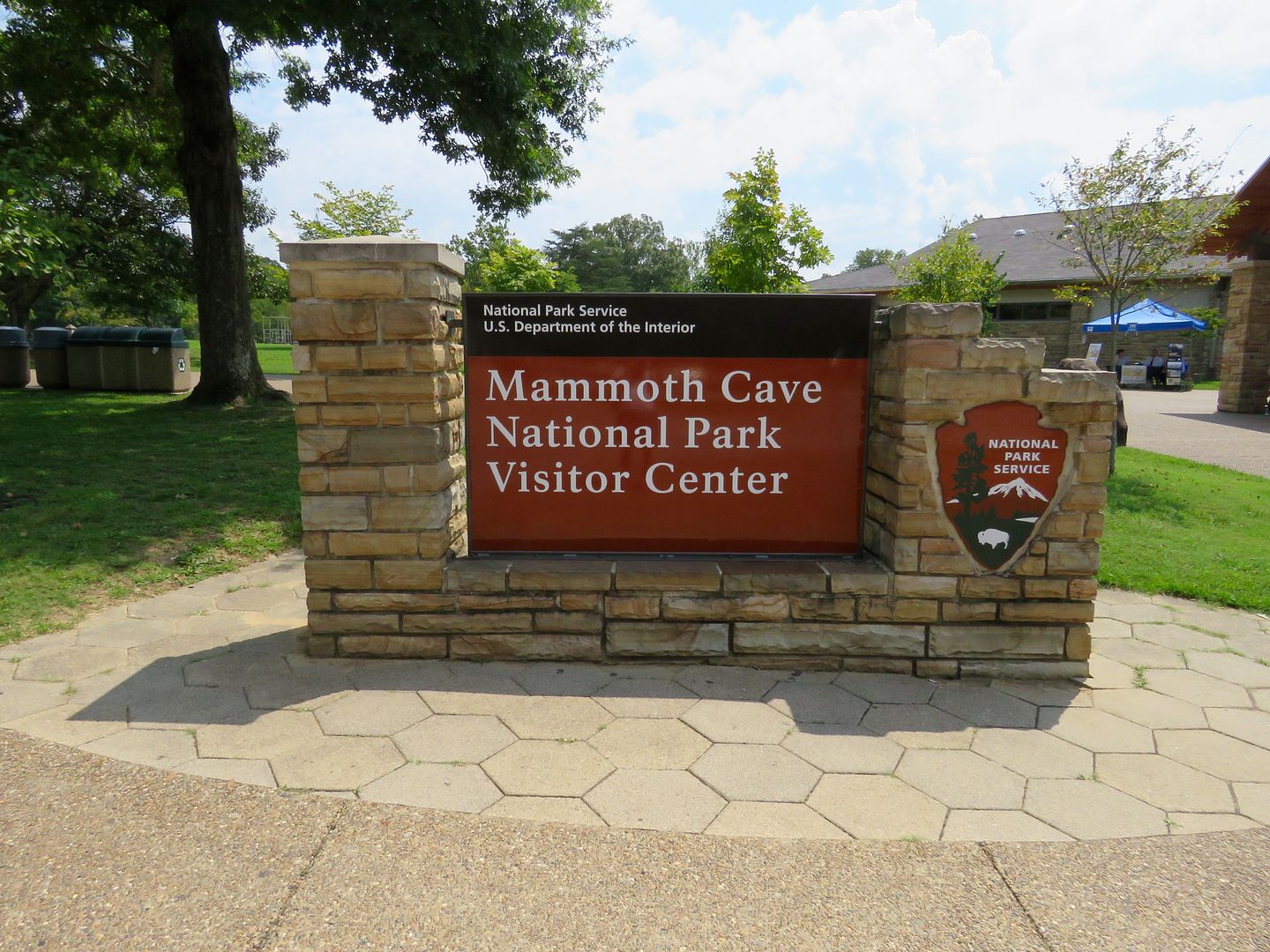
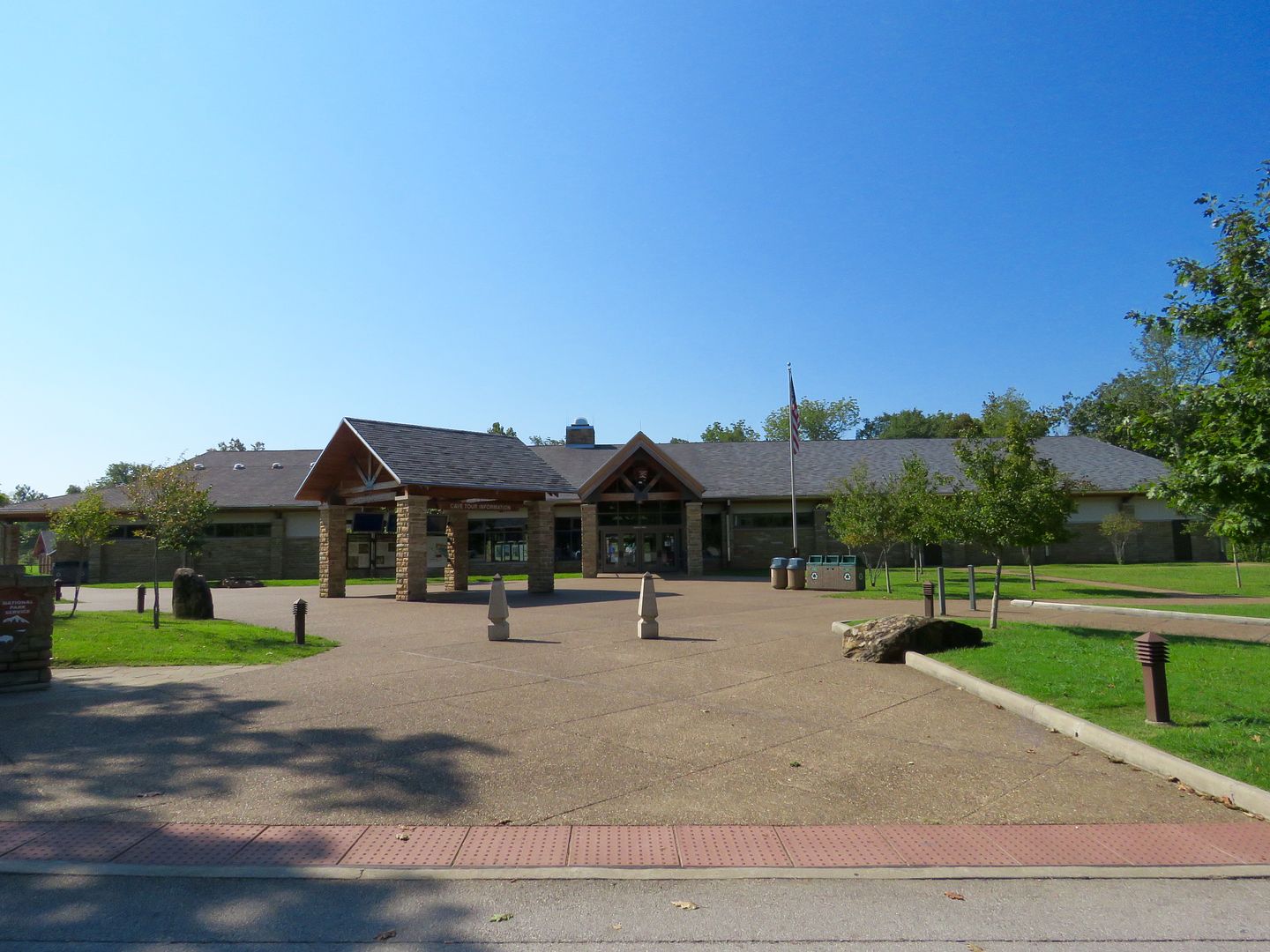

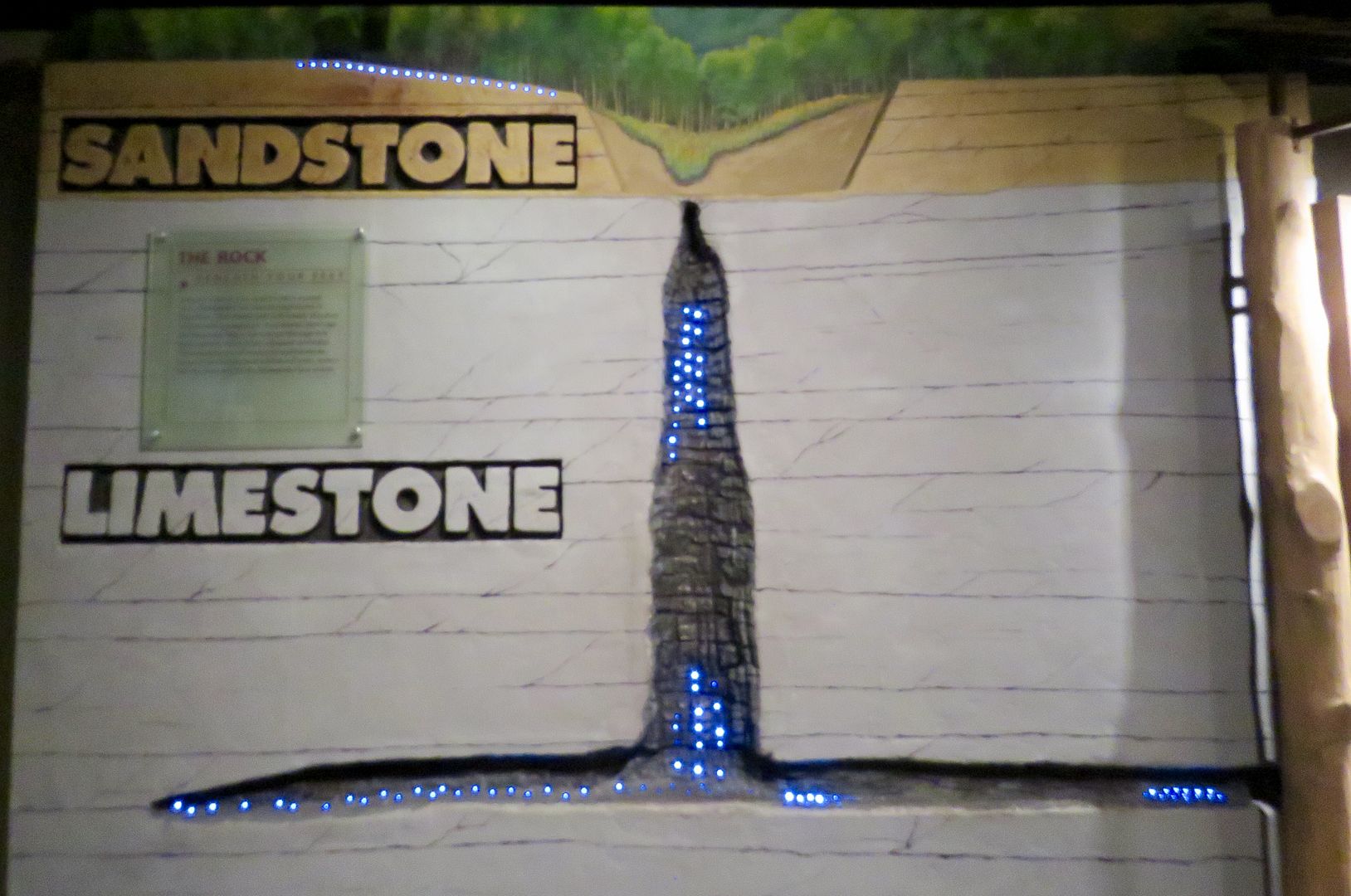
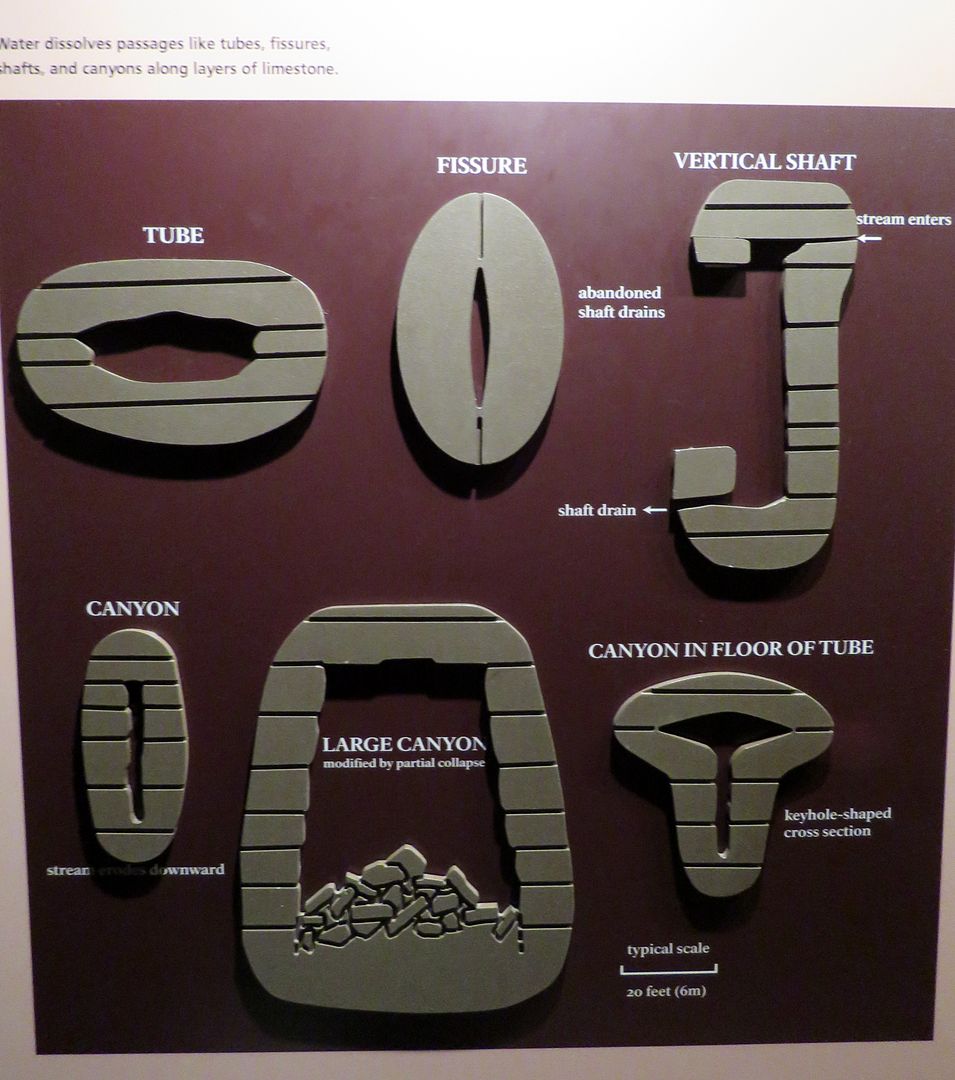

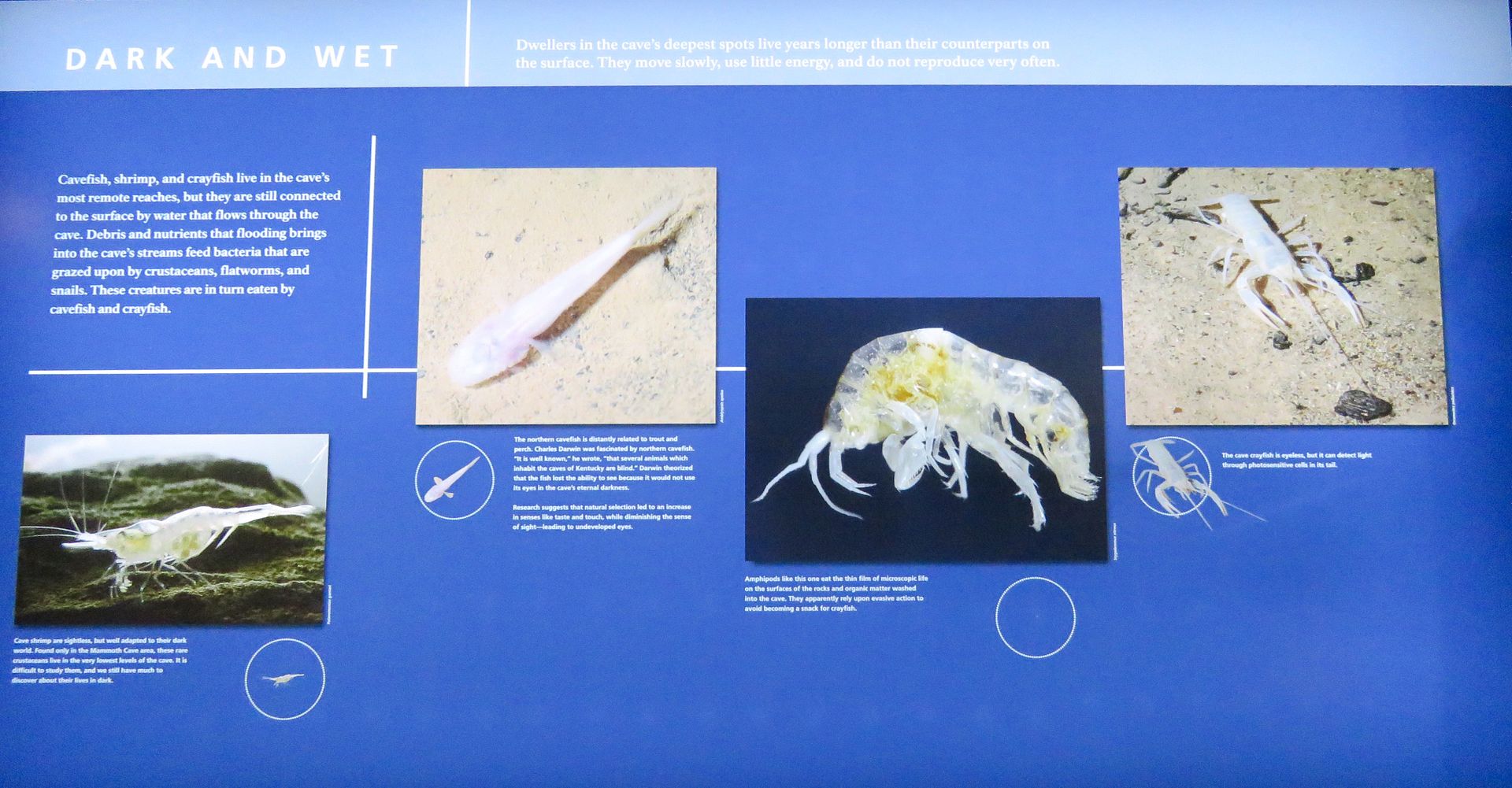


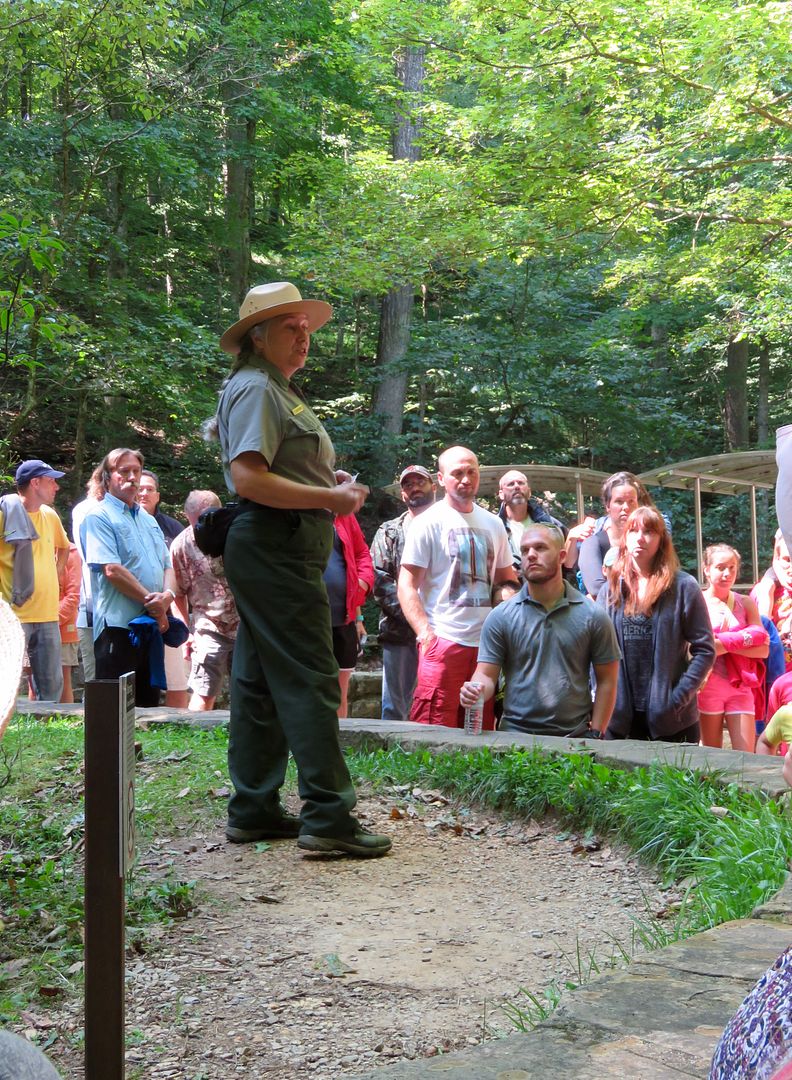
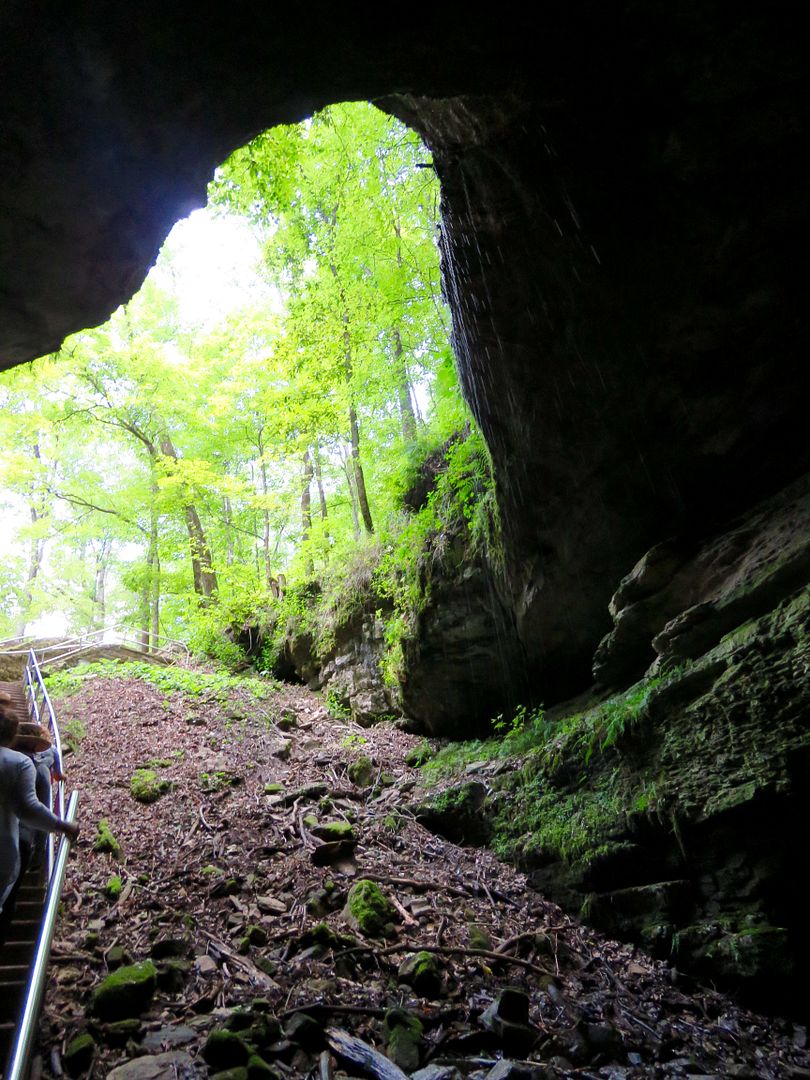
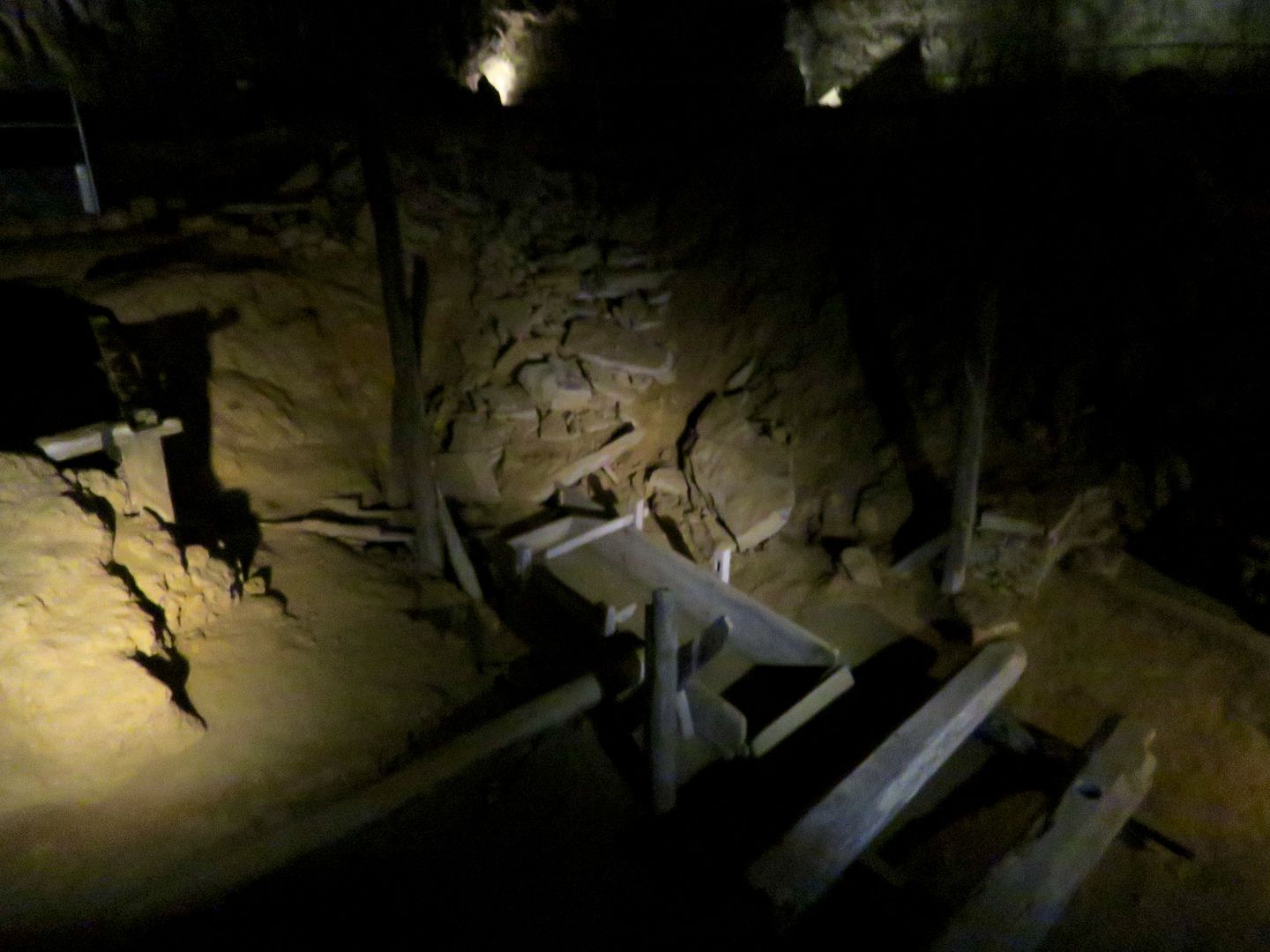
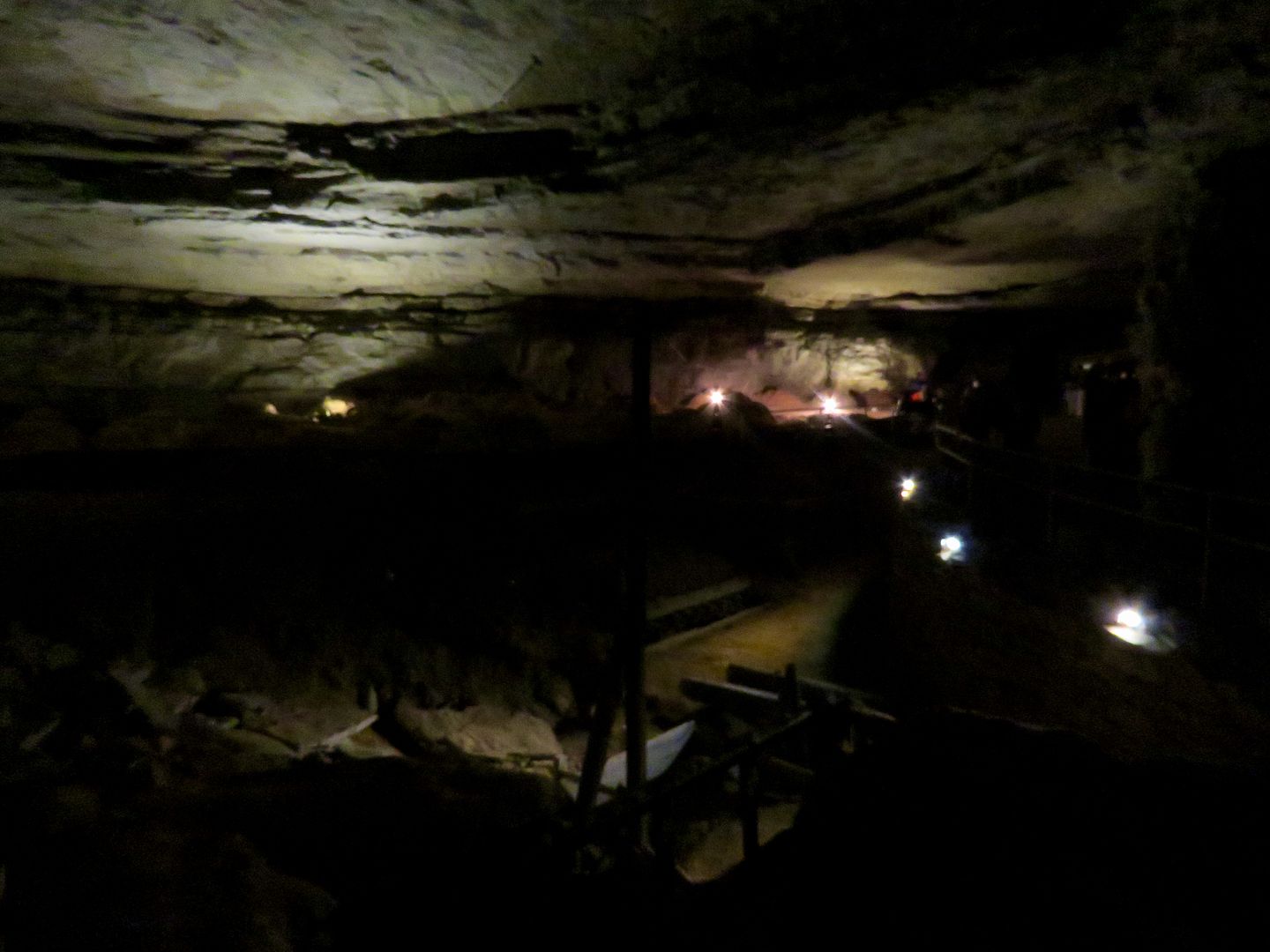
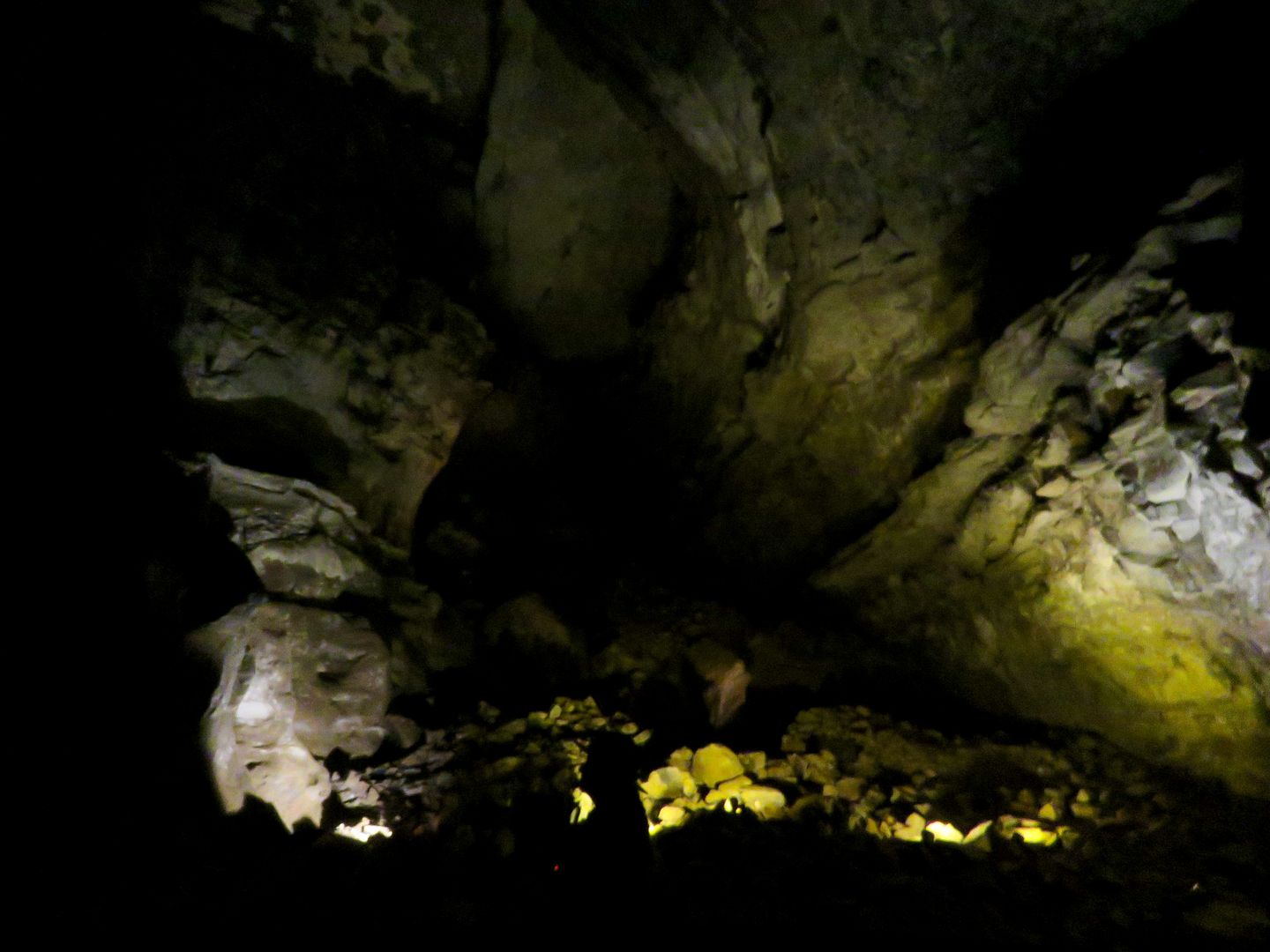
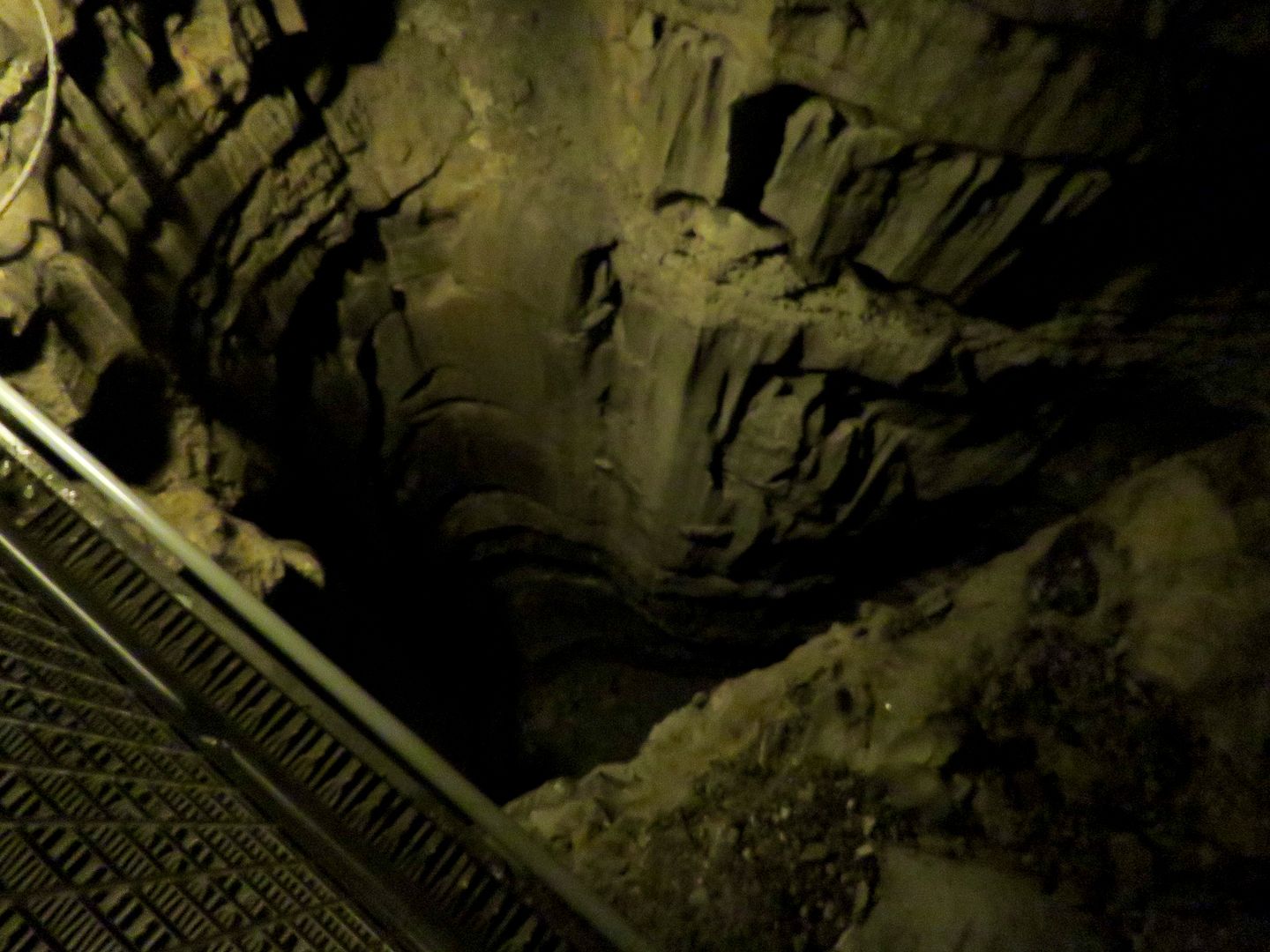


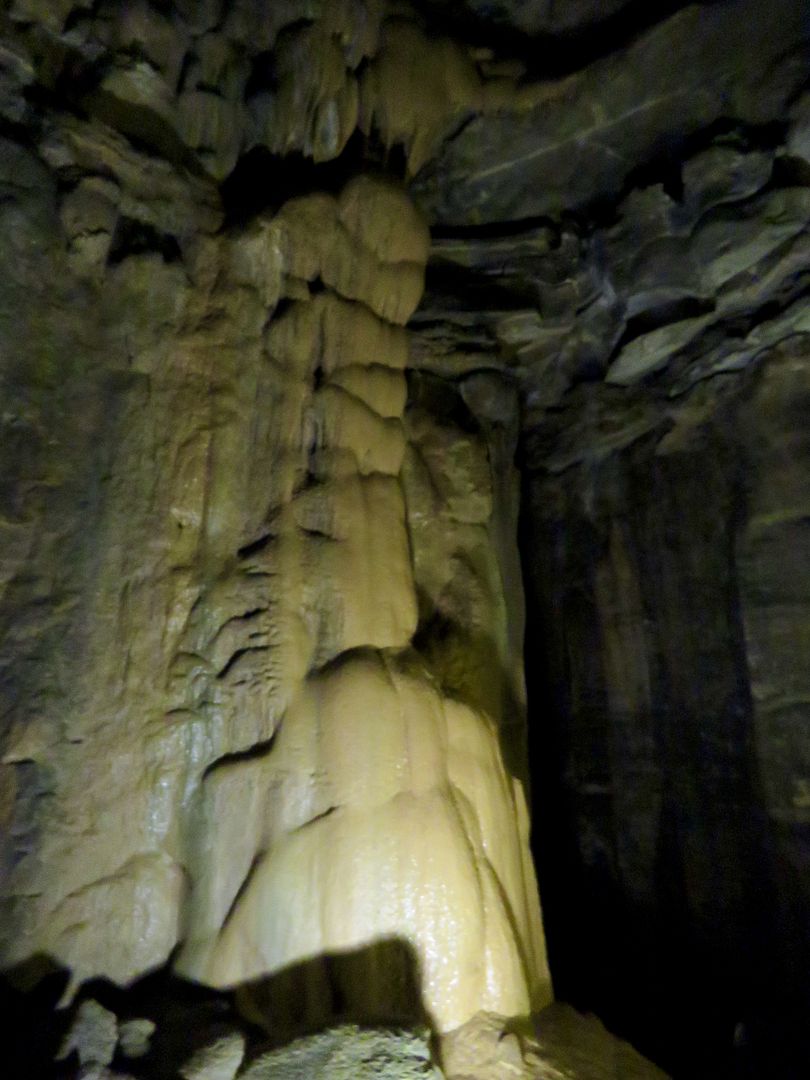
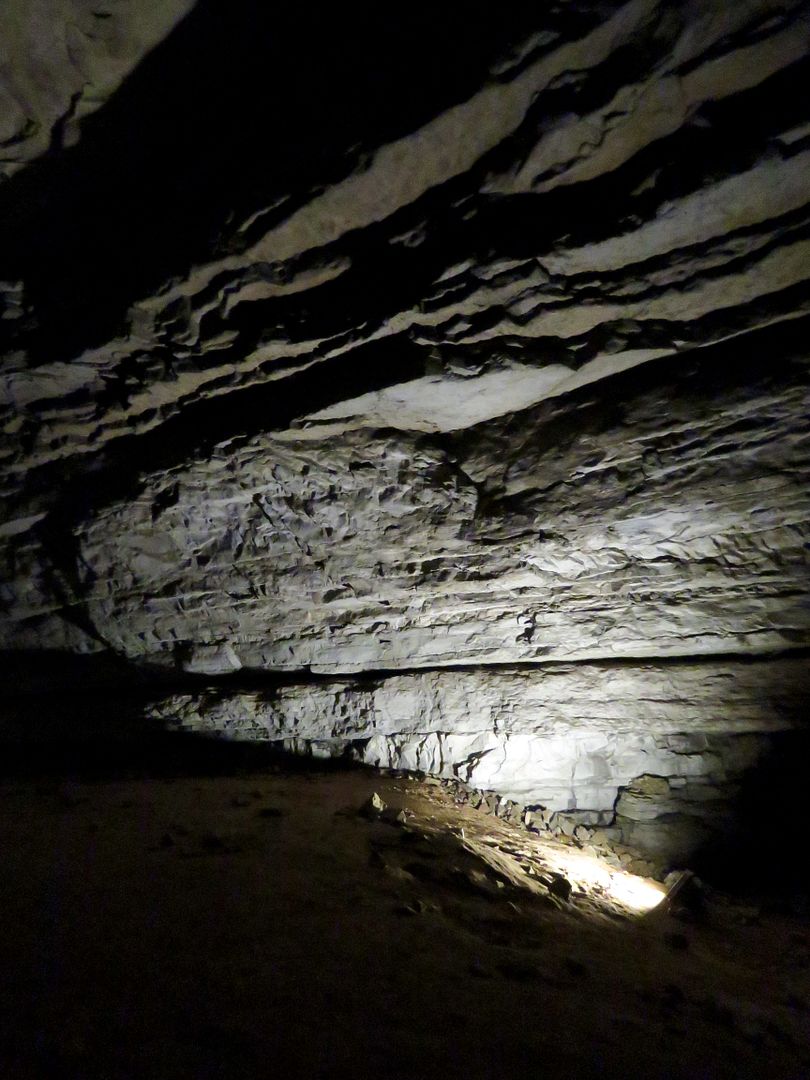
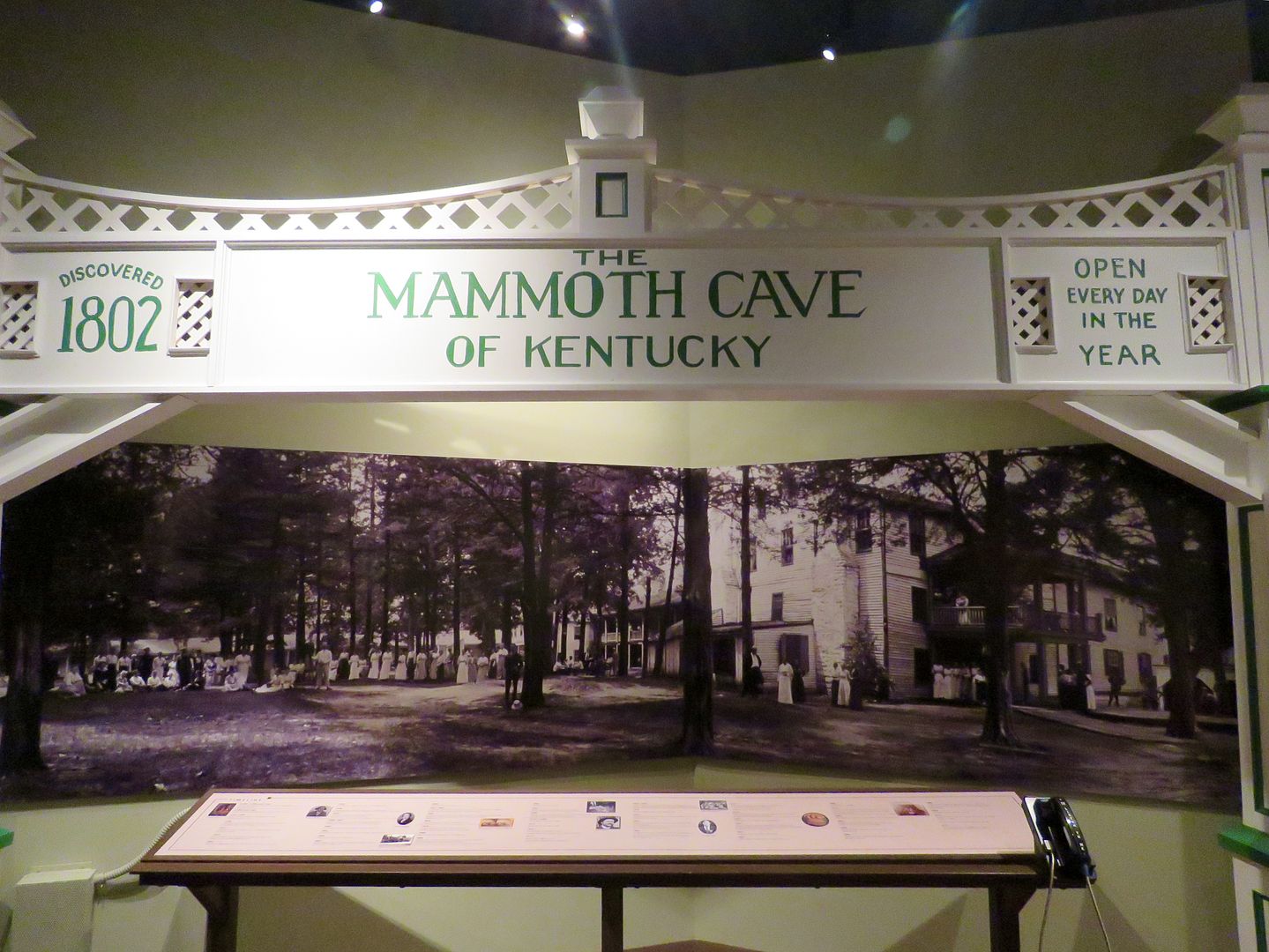
No comments:
Post a Comment